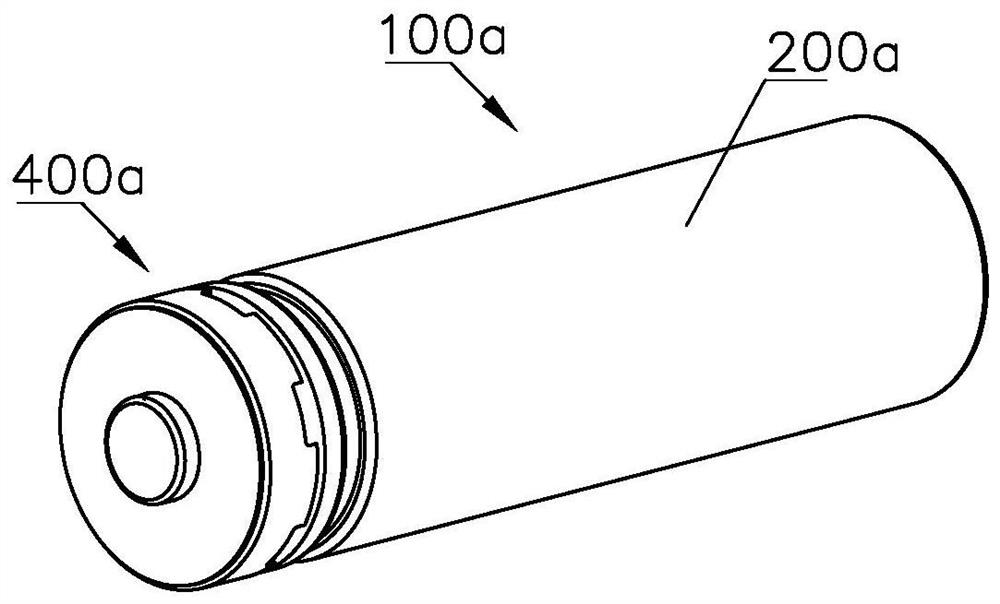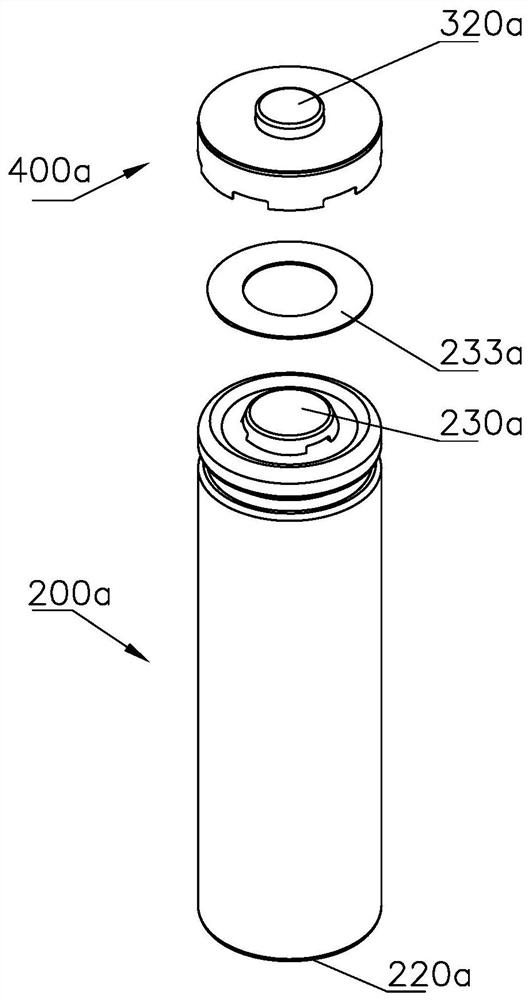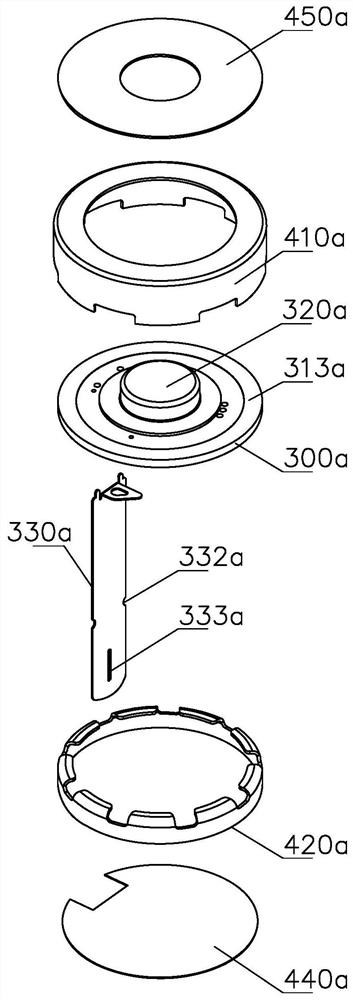Battery controller and rechargeable battery
A technology for battery controllers and rechargeable batteries, which is applied to secondary batteries, electrochemical generators, battery pack components, etc., and can solve problems such as large controller size, battery overheating, and explosion
- Summary
- Abstract
- Description
- Claims
- Application Information
AI Technical Summary
Problems solved by technology
Method used
Image
Examples
Embodiment 1
[0168] Example 1, N-type No. 5 steel case lithium ion secondary battery.
[0169] refer to figure 1 with figure 2 , the battery 100a mainly includes: a battery cell 200a and a controller 400a. The cell 200a has a cylindrical shape and has a cell positive electrode 230a and a cell negative electrode 220a. The controller 400a is coaxially stacked on the end where the positive electrode 230a of the cell is located and packaged with the No. 5 steel-cased cell 200a as a whole.
[0170] The battery cell 200a shown in this embodiment is a CID battery cell, that is, a battery cell with a current cut-off protection structure. When the battery cell fails (such as overheating, short circuit, overcharging, etc.), a lot of gas will be generated inside, and when the pressure increases, The inside of the battery cell will automatically break the circuit and play a protective role.
[0171] The shell of the battery cell 200a is a steel shell, and the internal structure of the battery cel...
Embodiment 2
[0246] Embodiment 2, N-type No. 5 soft-pack lithium-ion secondary battery.
[0247] Figure 14 to Figure 20 It is the structure diagram of N-type No. 5 soft-pack lithium-ion secondary battery and its controller.
[0248] refer to Figure 14 with Figure 15 , the battery 100b includes a battery outer shell 110b, a cell 200b and a controller 400b.
[0249] The battery cell 200b in this embodiment is a soft-packed lithium-ion battery cell. Like the above-mentioned embodiment, it is also in a cylindrical shape and has a positive electrode 230b and a negative electrode 220b.
[0250] The battery case 110b is a cylindrical structure with one end open and the other end closed. The positive electrode 230b of the cell is a positive electrode sheet, and the negative electrode 220b of the cell is a negative electrode sheet.
[0251] The positive electrode 230b of the battery cell is a lug structure with a certain length. After the negative electrode 220b of the battery cell is exten...
Embodiment 3
[0261] Example 3, N-type No. 7 steel case lithium ion secondary battery.
[0262] Figure 21 to Figure 27 It is the structural diagram of the N-type No. 7 steel case lithium-ion secondary battery and its controller.
[0263] The secondary battery structure of this embodiment is similar to that of Embodiment 1. The difference is that Embodiment 1 is the No. 5 battery, and this embodiment is the No. 7 battery. Since the diameter of the No. 7 battery is smaller than that of the No. 5 battery, the There will be slight differences in design, mainly manifested in: the movable end of the inner electrode 330c of the controller 400c of the No. 7 steel shell lithium-ion secondary battery in this embodiment is circular, and the shape of the electrode cap pad 310c is different.
[0264] refer to Figure 21 , the battery 100c includes: a battery cell 200c and a controller 400c.
[0265] The battery cell 200c of this embodiment is a steel-cased lithium-ion battery cell, which is also in ...
PUM
 Login to View More
Login to View More Abstract
Description
Claims
Application Information
 Login to View More
Login to View More - R&D
- Intellectual Property
- Life Sciences
- Materials
- Tech Scout
- Unparalleled Data Quality
- Higher Quality Content
- 60% Fewer Hallucinations
Browse by: Latest US Patents, China's latest patents, Technical Efficacy Thesaurus, Application Domain, Technology Topic, Popular Technical Reports.
© 2025 PatSnap. All rights reserved.Legal|Privacy policy|Modern Slavery Act Transparency Statement|Sitemap|About US| Contact US: help@patsnap.com



